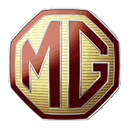When doing a complete car, there is no way to shoot the entire thing on one day, my booth simply cannot hold it all. This gives us two options. The first is to paint all of the “hidden” areas, doorjambs, boot, shut faces, etc., all in separate stages. Then the car can be bolted together and the exterior shot all at once. The other option is to shoot all surfaces of the parts all at once, panels in one batch and the body in another, then to assemble the completely painted car.
Both systems have drawbacks. In the first, there will always be masking lines, no matter how faint. Even using the latest foam tapes and being very clever with placement, there will always be a way to spot the break line. In the second, there is no danger of masking lines, since the paint was shot over the entire panel. We do however have a danger of chipping the fresh paint while assembling the car. There is also the very slim chance that the weather conditions on the two painting days will be drastically different, leading to slight color mismatch due to different drying rates. This is generally alleviated by checking the forecast prior to planning a week of finish painting, and planning shooting days accordingly. I generally prefer to paint the panels separately and assemble the car afterwards. If done correctly, the paint will be much nicer and better than factory-fresh.
In any case, the painting process will be the same. Lets assume we are going to paint the body, with the panels off. The car is washed off with a soft scotch-brite pad, water and Ting, as before. This is our last chance to remove any dust, grit, dirt, etc, so we go at it with abandon. After Tinging the car, we rinse everything off, paying special attention to notorious nooks and crannies. If we do it right, water will flow off the car in a smooth sheet, meaning we have removed any dirt or finger oils. With gloves on, we roll the car into the booth and place it on jack stands, to get a good height for painting. I can’t stand paint jobs that miss the rockers…
Using filtered air from the booth air supply, we blow the car dry, especially the nooks and crannies. Now we mask off any areas that we don’t want to overspray, such as the undercarriage or engine bay, as the case may be. That finished, we wipe the car off with wax and silicone remover. Every paint manufacturer sells their own version. I use PPG brand DX330, though I call it Pre-Cleano, which is the name of a DuPont product I learned with. Old habits, and all that. In any case, this is a “wax on-wax off” process, with one prep towel in one hand wetted with the product and the other drying as you go. The idea is that any unwanted chemistry will go into suspension when wiped with the product, then get lifted off onto the dry cloth. We do this over every surface that will get paint.
Once the cleaner has evaporated, the last step is to wipe the whole thing down with a tack-cloth. I have no idea what is in those things, but they leave nothing that will harm the paint. Running a tack-cloth over the whole car will be the last chance to pick up any grit or dust. Anything left on the car after all of this prep work will be there forever.
